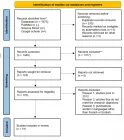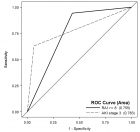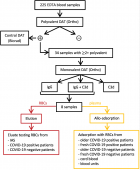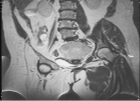Abstract
Research Article
The alterations effects in phosphorus of erythropoietin and U-74389G
C Τsompos*, C Panoulis, A Triantafyllou, CG Zografos, K Tsarea, M Karamperi and A Papalois
Published: 13 April, 2020 | Volume 3 - Issue 1 | Pages: 021-026
Aim: This study calculated the effects on serum phosphorus (P) levels, after treatment with either of 2 drugs: the erythropoietin (Epo) and the antioxidant lazaroid (L) drug U-74389G. The calculation was based on the results of 2 preliminary studies, each one of which estimated the certain influence, after the respective drug usage in an induced ischemia reperfusion (IR) animal experiment.
Materials and methods: The 2 main experimental endpoints at which the serum P levels were evaluated was the 60th reperfusion min (for the groups A, C and E) and the 120th reperfusion min (for the groups B, D and F). Specially, the groups A and B were processed without drugs, the groups C and D after Epo administration; whereas the groups E and F after the L administration.
Results: The first preliminary study of Epo presented a non significant hyperphosphoremic effect by 2.46% + 2.02% (p - value = 0.2168). However, the second preliminary study of U-74389G presented a non significant hypophosphoremic effect by 1.09% + 2.01% (p - value = 0.5771). These 2 studies were co-evaluated since they came from the same experimental setting. The outcome of the co-evaluation was that L is at least 0.4455128-fold [0.4445589 - 0.4464687] more hypophosphoremic than Epo (p - value = 0.0000).
Conclusions: The anti-oxidant capacities of U-74389G ascribe at least 0.4455128-fold [0.4445589 - 0.4464687] more effects than Epo (p - value = 0.0000).
Read Full Article HTML DOI: 10.29328/journal.ijbmr.1001012 Cite this Article Read Full Article PDF
Keywords:
Ischemia; Erythropoietin; U-74389G; Serum phosphorus levels; Reperfusion
References
- Τsompos C, Panoulis C, Τοutouzas K, Ζografos G, Papalois A. The effect of the antioxidant drug “U-74389G” on phosphorus levels during ischemia reperfusion injury in rats. Psychogeriatria Polska. 2013; 10: 103-108.
- Tsompos C, Panoulis C, Toutouzas K, Zografos G, Papalois A. The effect of erythropoietin on phosphorus levels during hypoxia reoxygenation injury in rats. Int J Disabil Hum Dev. 2015; 1-5.
- Ozelsancak R, Micozkadioglu H, Torun D, Tekkarismaz N. Cerebrovascular events in hemodialysis patients; a retrospective observational study. BMC Nephrol. 2019; 20: 466. PubMed: https://www.ncbi.nlm.nih.gov/pubmed/31830923
- Takahashi Y, Saito S, Kioka H, Araki R, Asano Y, et al. Mouse skeletal muscle creatine chemical exchange saturation transfer (CrCEST) imaging at 11.7T MRI. J Magn Reson Imaging. 2020; 51: 563-570.
- Dubský M, Šedivý P, Němcová A, Drobný M, Hazdrová J, et al. Clinical and (31)P magnetic resonance spectroscopy characterization of patients with critical limb ischemia before and after autologous cell therapy. Physiol Res. 2019; 68: 559-566. PubMed: https://www.ncbi.nlm.nih.gov/pubmed/31177796
- Stephens BY, Kaur J, Vranish JR, Barbosa TC, Blankenship JK, et al. Effect of acute high-phosphate intake on muscle metaboreflex activation and vascular function. Am J Physiol Heart Circ Physiol. 2019; 317: H308-H314. PubMed: https://www.ncbi.nlm.nih.gov/pubmed/31100010
- Wang Y, Gao Y, Ma J. Pleiotropic effects and pharmacological properties of penehyclidine hydrochloride. Drug Des Devel Ther. 2018; 12: 3289-3299. PubMed: https://www.ncbi.nlm.nih.gov/pubmed/30323561
- Gruson D, Carbone V, Feracin B, Ahn SA, Rousseau MF. Incremental value of intact fibroblast growth factor 23 to natriuretic peptides for long-term risk estimation of heart failure patients. Clin Biochem. 2018; 61: 47-49. PubMed: https://www.ncbi.nlm.nih.gov/pubmed/30205090
- Hart CR, Layec G, Trinity JD, Le Fur Y, Gifford JR, et al. Oxygen availability and skeletal muscle oxidative capacity in patients with peripheral artery disease: implications from in vivo and in vitro assessments. Am J Physiol Heart Circ Physiol. 2018; 315: H897-H909. PubMed: https://www.ncbi.nlm.nih.gov/pubmed/29932772
- Anselmo NA, Paskakulis LC, Garcias RC, Botelho FFR, Toledo GQ, et al. Prior intake of Brazil nuts attenuates renal injury induced by ischemia and reperfusion. J Bras Nefrol. 2018; 40: 10-17. PubMed: https://www.ncbi.nlm.nih.gov/pubmed/29796584
- Tarui T, Miyata K, Shigematsu S, Watanabe G. Risk factors to predict leg ischemia in patients undergoing single femoral artery cannulation in minimally invasive cardiac surgery. Perfusion. 2018; 33: 533-537. PubMed: https://www.ncbi.nlm.nih.gov/pubmed/29637839
- Dattilo G, Casale M, Avventuroso E, Laganà P. Vitamin D Dietary Supplementation: Relationship with Chronic Heart Failure. J AOAC Int. 2018; 101: 939-941. PubMed: https://www.ncbi.nlm.nih.gov/pubmed/29566776
- Hirose K, Chikamori T, Hida S, Tanaka N, Yamashita J, et al. Application of pressure-derived myocardial fractional flow reserve in chronic hemodialysis patients. J Cardiol. 2018; 71: 52-58. PubMed: https://www.ncbi.nlm.nih.gov/pubmed/29183566
- Abdurrachim D, Prompers JJ. Evaluation of cardiac energetics by non-invasive 31P magnetic resonance spectroscopy. Biochim Biophys Acta Mol Basis Dis. 2018; 1864: 1939-1948. PubMed: https://www.ncbi.nlm.nih.gov/pubmed/29175056
- El Sharkawy M, Aly O, Elsayed H, Ezzat H, Mohab A, et al. MicroRNA 499 gene expression in patients on hemodialysis with cardiovascular complications. Hemodial Int. 2017; 21: S16-S21. PubMed: https://www.ncbi.nlm.nih.gov/pubmed/29064177
- Andrulli S, Chiavenna C, Bigi MC, Crepaldi M, Dell'Oro C, et al. Predictors of first ischemic lower limb ulcer in dialysis patients: an observational cohort study. J Nephrol. 2018; 31: 435-443. PubMed: https://www.ncbi.nlm.nih.gov/pubmed/28831705
- Yuan H, Shi Y, Li Y, Yang L, Tang Y, et al. Evaluation of a TPTX model induced by ischemia. Exp Anim. 2017; 66: 345-356. PubMed: https://www.ncbi.nlm.nih.gov/pubmed/28674286
- Chatel B, Messonnier LA, Bendahan D. Exacerbated in vivo metabolic changes suggestive of a spontaneous muscular vaso-occlusive crisis in exercising muscle of a sickle cell mouse. Blood Cells Mol Dis. 2017; 65: 56-59. PubMed: https://www.ncbi.nlm.nih.gov/pubmed/28552472
- Němcová A, Dubský M, Jirkovská A, Šedivý P, Drobný M, et al. Diabetic foot syndrome: importance of calf muscles MR spectroscopy in the assessment of limb ischemia and effect of revascularization. Vnitr Lek. 2017; 63: 236-241. PubMed: https://www.ncbi.nlm.nih.gov/pubmed/28520446
- Ezzati M, Kawano G, Rocha-Ferreira E, Alonso-Alconada D, Hassell JK, et al. Dexmedetomidine Combined with Therapeutic Hypothermia Is Associated with Cardiovascular Instability and Neurotoxicity in a Piglet Model of Perinatal Asphyxia. Dev Neurosci. 2017; 39: 156-170. PubMed: https://www.ncbi.nlm.nih.gov/pubmed/28391258
- Kamath SD, Rao BS. Delayed Post-Surgical Hypoparathyroidism: The Forgotten Chameleon! J Clin Diagn Res. 2017; 11: OD07-OD09. PubMed: https://www.ncbi.nlm.nih.gov/pubmed/28384917
- Carlbom L, Weis J, Johansson L, Korsgren O, Ahlström H. Pre-transplantation 31P-magnetic resonance spectroscopy for quality assessment of human pancreatic grafts - A feasibility study. Magn Reson Imaging. 2017; 39: 98-102. PubMed: https://www.ncbi.nlm.nih.gov/pubmed/28188872
- Lowe DW, Hollis BW, Wagner CL, Bass T, Kaufman DA, et al. Vitamin D insufficiency in neonatal hypoxic-ischemic encephalopathy. Pediatr Res. 2017; 82: 55-62. PubMed: https://www.ncbi.nlm.nih.gov/pubmed/28099429
- Layec G, Trinity JD, Hart CR, Le Fur Y, Sorensen JR, et al. Evidence of a metabolic reserve in the skeletal muscle of elderly people. Aging (Albany NY). 2016; 9: 52-67. PubMed: https://www.ncbi.nlm.nih.gov/pubmed/27824313
- Groenendaal F, de Vries LS. Fifty years of brain imaging in neonatal encephalopathy following perinatal asphyxia. Pediatr Res. 2017; 81: 150-155. PubMed: https://www.ncbi.nlm.nih.gov/pubmed/27673422
- Li Y, Wang X, Lou C. Gastrodin Pretreatment Impact on Sarcoplasmic Reticulum Calcium Transport ATPase (SERCA) and Calcium Phosphate (PLB) Expression in Rats with Myocardial Ischemia Reperfusion. Med Sci Monit. 2016; 22: 3309-3315. PubMed: https://www.ncbi.nlm.nih.gov/pubmed/27641420
- Liu Y, Mei X, Li J, Lai N, Yu X. Mitochondrial function assessed by 31P MRS and BOLD MRI in non-obese type 2 diabetic rats. Physiol Rep. 2016; 4: e12890. PubMed: https://www.ncbi.nlm.nih.gov/pubmed/27511984
- Inci A, Olmaz R, Sarı F, Coban M, Ellidag HY, et al. Increased oxidative stress in diabetic nephropathy and its relationship with soluble Klotho levels. Hippokratia. 2016; 20: 198-203. PubMed: https://www.ncbi.nlm.nih.gov/pubmed/29097885
- Brown CA, Elliott J, Schmiedt CW, Brown SA. Chronic Kidney Disease in Aged Cats: Clinical Features, Morphology, and Proposed Pathogeneses. Vet Pathol. 2016; 53: 309-326. PubMed: https://www.ncbi.nlm.nih.gov/pubmed/26869151
- Broad KD, Fierens I, Fleiss B, Rocha-Ferreira E, Ezzati M, et al. Inhaled 45-50% argon augments hypothermic brain protection in a piglet model of perinatal asphyxia. Neurobiol Dis. 2016; 87: 29-38. PubMed: https://www.ncbi.nlm.nih.gov/pubmed/26687546
- Ezzati M, Bainbridge A, Broad KD, Kawano G, Oliver-Taylor A, et al. Immediate remote ischemic postconditioning after hypoxia ischemia in piglets protects cerebral white matter but not grey matter. J Cereb Blood Flow Metab. 2016; 36: 1396-411. PubMed: https://www.ncbi.nlm.nih.gov/pubmed/26661194
- Wilder CD, Masoud R, Yazar D, O'Brien BA, Eykyn TR, et al. Contractile function assessment by intraventricular balloon alters the ability of regional ischaemia to evoke ventricular fibrillation. Br J Pharmacol. 2016; 173: 39-52. PubMed: https://www.ncbi.nlm.nih.gov/pubmed/26661194
- Tsompos Constantinos. Comparison of the Magnesium Alterations after Erythropoietin and U-74389G Process. Int J Res Studies in Microbiology and Biotechnology (IJRSMB). 2019; 5: 17-25.
Figures:
Similar Articles
-
The alterations effects in phosphorus of erythropoietin and U-74389GC Τsompos*,C Panoulis,A Triantafyllou,CG Zografos,K Tsarea,M Karamperi,A Papalois. The alterations effects in phosphorus of erythropoietin and U-74389G. . 2020 doi: 10.29328/journal.ijbmr.1001012; 3: 021-026
Recently Viewed
-
Relationship between Vitamin D Deficiency and Lipopolysaccharides Porphyromonas gingivalis Bacteria in Stunting ChildrenErwin Gunawan*,Ria Puspitawati. Relationship between Vitamin D Deficiency and Lipopolysaccharides Porphyromonas gingivalis Bacteria in Stunting Children. Ann Biomed Sci Eng. 2024: doi: 10.29328/journal.abse.1001033; 8: 059-065
-
Addiction to self-strangulation: a case-reportAurely Ameller*,Yann Le Strat,Marion Cadranel,Celine Portalier, Caroline Dubertret. Addiction to self-strangulation: a case-report . J Addict Ther Res. 2017: doi: 10.29328/journal.jatr.1001003; 1: 016-021
-
Nanoencapsulated Extracts from Leaves of Bauhinia forficata Link: In vitro Antioxidant, Toxicogenetic, and Hypoglycemic Activity Effects in Streptozotocin-induced Diabetic MiceBárbara Verônica Cardoso de Souza, Alessandra Braga Ribeiro*, Rita de Cássia Meneses Oliveira, Julianne Viana Freire Portela, Ana Amélia de Carvalho Melo Cavalcante, Esmeralda Maria Lustosa Barros, Luís Felipe Lima Matos, Tarsia Giabardo Alves, Maria. Nanoencapsulated Extracts from Leaves of Bauhinia forficata Link: In vitro Antioxidant, Toxicogenetic, and Hypoglycemic Activity Effects in Streptozotocin-induced Diabetic Mice. Arch Pharm Pharma Sci. 2024: doi: 10.29328/journal.apps.1001063; 8: 100-115
-
Oral Suspension as Versatile Galenic Formulation in PediatryMauro Luisetto*, Almukthar N, Edbey K, Mashori GR, Fiazza C, Dona’ l, Cabianca L, Latyshev O. Oral Suspension as Versatile Galenic Formulation in Pediatry. Arch Pharm Pharma Sci. 2024: doi: 10.29328/journal.apps.1001062; 8: 091-099
-
Modulation of Microbiota and its Impact on DepressionKousik Maparu*. Modulation of Microbiota and its Impact on Depression. Arch Pharm Pharma Sci. 2024: doi: 10.29328/journal.apps.1001061; 8: 089-090
Most Viewed
-
Evaluation of Biostimulants Based on Recovered Protein Hydrolysates from Animal By-products as Plant Growth EnhancersH Pérez-Aguilar*, M Lacruz-Asaro, F Arán-Ais. Evaluation of Biostimulants Based on Recovered Protein Hydrolysates from Animal By-products as Plant Growth Enhancers. J Plant Sci Phytopathol. 2023 doi: 10.29328/journal.jpsp.1001104; 7: 042-047
-
Sinonasal Myxoma Extending into the Orbit in a 4-Year Old: A Case PresentationJulian A Purrinos*, Ramzi Younis. Sinonasal Myxoma Extending into the Orbit in a 4-Year Old: A Case Presentation. Arch Case Rep. 2024 doi: 10.29328/journal.acr.1001099; 8: 075-077
-
Feasibility study of magnetic sensing for detecting single-neuron action potentialsDenis Tonini,Kai Wu,Renata Saha,Jian-Ping Wang*. Feasibility study of magnetic sensing for detecting single-neuron action potentials. Ann Biomed Sci Eng. 2022 doi: 10.29328/journal.abse.1001018; 6: 019-029
-
Pediatric Dysgerminoma: Unveiling a Rare Ovarian TumorFaten Limaiem*, Khalil Saffar, Ahmed Halouani. Pediatric Dysgerminoma: Unveiling a Rare Ovarian Tumor. Arch Case Rep. 2024 doi: 10.29328/journal.acr.1001087; 8: 010-013
-
Physical activity can change the physiological and psychological circumstances during COVID-19 pandemic: A narrative reviewKhashayar Maroufi*. Physical activity can change the physiological and psychological circumstances during COVID-19 pandemic: A narrative review. J Sports Med Ther. 2021 doi: 10.29328/journal.jsmt.1001051; 6: 001-007

HSPI: We're glad you're here. Please click "create a new Query" if you are a new visitor to our website and need further information from us.
If you are already a member of our network and need to keep track of any developments regarding a question you have already submitted, click "take me to my Query."


















































































































































